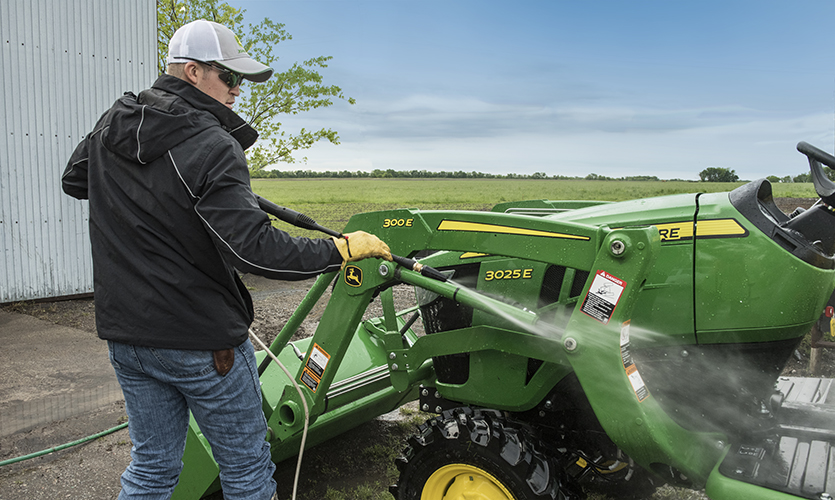SunSouth Tips
How to Store Off Season Equipment

Anytime you're storing equipment for an extended period of time, even a few months, it's smart to first take the time to make sure it's cleaned, maintained, and properly protected. A little effort here will make start-up easier and help your equipment last longer and perform better.
Storage procedures for every piece of equipment will be a little different, but generally speaking, here are some top line thoughts on steps to take.
Equipment Storage Checklist
- -Clean it with a high-pressure washer, making sure to get in all the nooks and crannies where dirt and trash can hide.
- -Check for worn parts including belts and hoses, loose bolts, leaks, electrical connections, hydraulics, etc. Now is the time to repair and replace, rather than when you want to start up again and experience a problem, while the work you need to do goes undone.
- -Protect any scratched up areas on metal decks and housings to prevent rust. Paint works. Wax might be a good option in certain areas.
- -Check all fluid levels and filters and follow your operator's manual instructions for storage and maintenance.
- -Now is great time to remove and sharpen or replace blades on cutting equipment. Some require specialized skills or equipment. So consult your operator's manual, or call your John Deere dealer for advice.
- -Check tires for wear and damage. Make sure they're inflated to storage specification.
- -For implements like blades, plows, pushes, tillage tools, etc. all the ground-working components should be thoroughly cleaned and coated with a lubricant or other protective coating to prevent rust.
- -Lubricate all moving parts and check all grease points.
- -Storing equipment in a shed and under a tarp to protect it from the elements is also a good idea.
Lastly, always check the operator's manual for any special instructions on extended storage before storing equipment. Always read the Operator’s Manual before operating any piece of equipment and follow all operating and safety instructions.
And remember the old adage: How you put your tools away will determine the condition you find them in when you need to use them next time.
Go Back to List
- Tips Archive
- Doing a Control Burn to Manage Your Land
- Subsoiler Protein
- How to Start a Chainsaw
- Weed Control
- Summer Wildlife Management
- Summer Reforestation
- Summer Land Management
- Summer Gardening
- Soil
- Prescribe Burning
- New Land Owners
- Mulch and Fertilizer
- Mosquito Plants
- Laying Sod
- Hiring a Forester
- Fruits and Veggies
- Becoming a Forester
- 6 Edge of Field Best Practices for Agriculture
- Top 10 Implements for Livestock Operations
- How to Handle Large Round Bales
- How to Store Off Season Equipment
- How to Adjust and Use a Rotary Cutter
- Tips for Farmers To Get the Most Out of Their Land
- How To Change Your Transmission Oil and Filter on John Deere Compact Utility Tractors
- How To Prepare Your Tractor For Storage
- Common Tractor Maintenance Checkpoints
- The Top 10 Implements You Should Acquire First
WE'RE HERE TO HELP.
- CHECK our videos below. Looking for something else?
- DROP us a line for all inquiries. >>>